Last Updated on May 14, 2024
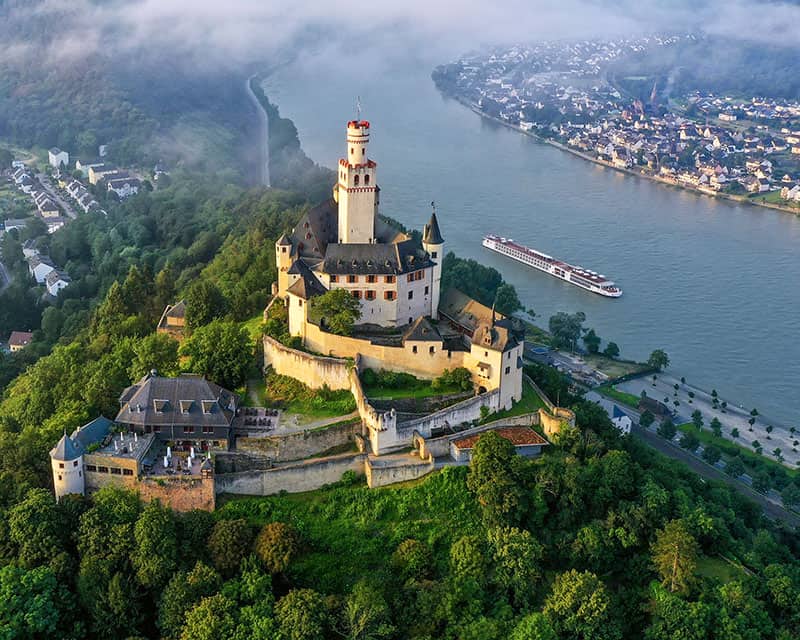
Throughout history, Vikings have always had a sense of restlessness and adventure. Norway based Viking Cruise Line has tapped into that urge for travel and has become the major player in river cruises on European waterways.
Most guests from North America fly into the town or city where one of Viking’s Longboats await them. They also leave for home on disembarkation. Our cruise was different.
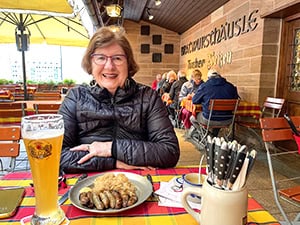
Our Viking river cruise started in Paris and ended in Prague. But there was no sailing on France’s Seine River or the Czech Republic’s Moldau. Instead, guests were treated to two days in Paris and another two days in Prague, both at fine hotels with complimentary city tours provided.
The actual river cruise only began on Day 3 after a long, four-hour bus ride. It included a poignant short stop in Luxembourg to visit the American Cemetery with the graves of more than 5,000 U.S. war dead. It includes the grave of General George S. Patton.
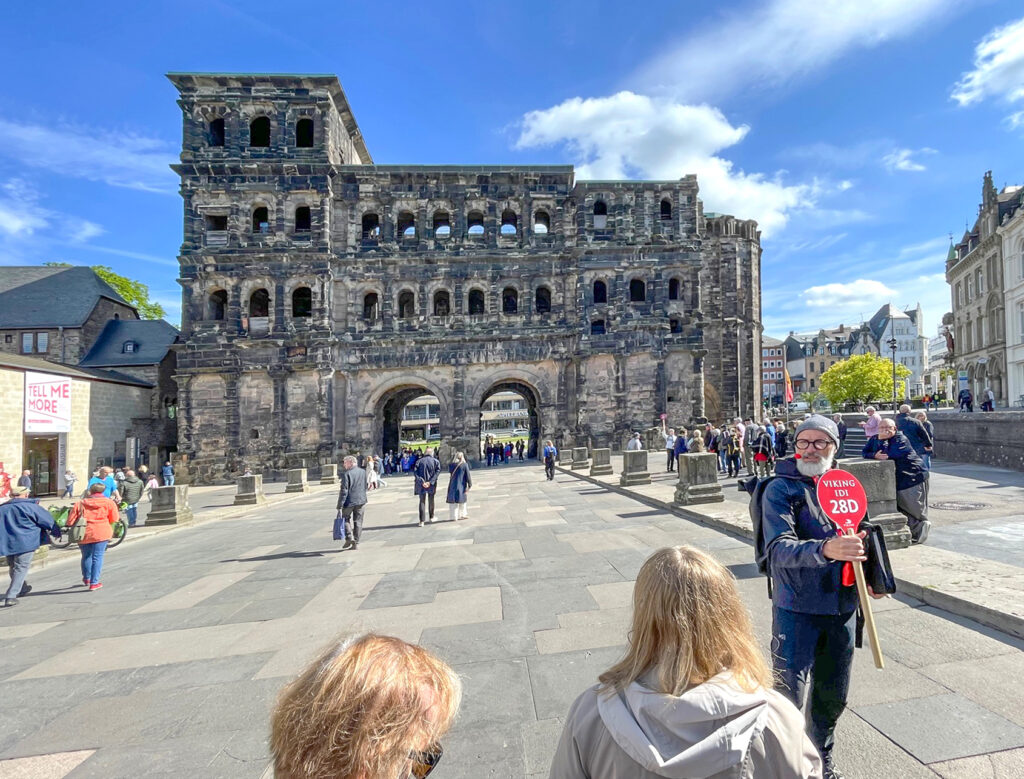
Boarding the Viking Idi
We finally boarded the Viking Idi, docked along the Moselle River, in Germany’s oldest city, Trier. This was one of the most interesting communities for us, particularly the Porta Nigra City Gate. It dates from the 2nd century AD and is the best-preserved Roman gate in the world.
The 190 passenger Viking Idi, one of 80 Longships in the company’s extensive river cruise fleet, is 10 years old but seemed to be very well maintained. Like most Longboats it’s 135 meters in length and 11 meters wide. Those dimensions allow it to safely fit under bridges and into the many locks on European rivers.
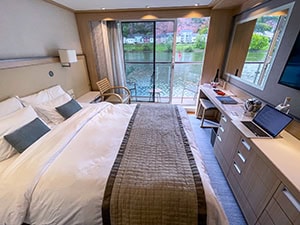
Viking Idi’s cordial crew of 53 were attentive and professional during all seven days as we sailed the Moselle, Rhine, and Main Rivers. Rooms, however, seemed a bit small. Ours, on the second deck, was 205 square feet including a tiny, two chair balcony. But it was well planned and functional with floor to ceiling windows, both U.S. and European electric outlets, excellent lighting and air conditioning, even a heated bathroom floor and fog free mirrors.
Fresh fruit in our room was replenished daily. Deck 3 includes 275 square feet junior suites and two Explorer suites, each 445 square feet. All rooms have a fridge but only the pricier third deck has fridges stocked with soda and beer.
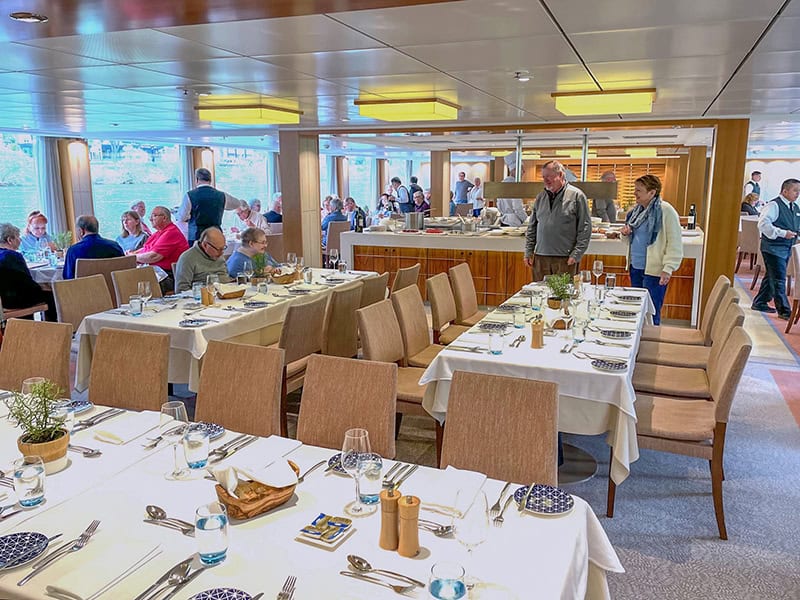
Idi’s Lounge and Restaurant
The lounge (forward on Deck 3) is used for all briefings and entertainment. In addition to a resident pianist, several local musical acts, even a glass blower, were brought aboard in the evening. With a full ship the lounge can get very crowded with poor sight lines for many guests.
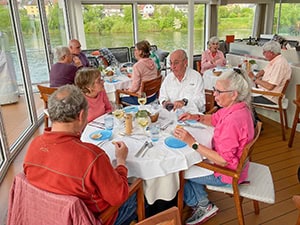
The Viking Idi’s Restaurant (forward on Deck 2) can accommodate all guests with tables for six or eight. It encourages conversation with fellow guests, primarily American but with a sprinkling of Canadian and British. There is also a small, optional dining area called Aquavit. It’s near the bow on Deck 3, does have tables for two or four but the menu is identical.
As on most cruise ships, an “always available” menu – salmon, chicken, steak – is popular but most guests chose the regional specialties like zwiebelrostbraten (braised beef) or wienerschnitzel, accompanied by complimentary Moselle or Rhine wines. Regular or non-alcoholic beer is also available, but Viking does not yet stock some of the better non-alcohol wines on this river cruise from Paris to Prague. Overall, we were very impressed with the quality and variety of the cuisine.
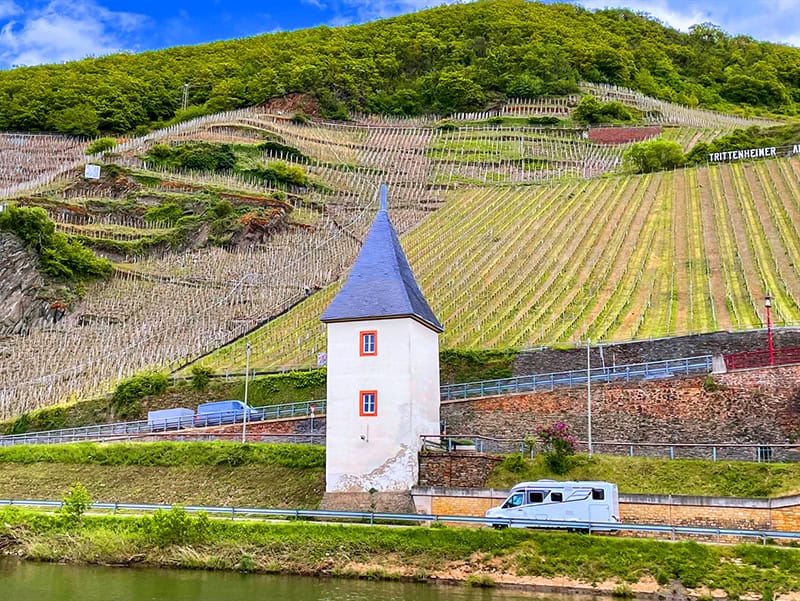
Four Countries, Three Rivers
Most guests chose this 12-day itinerary between because it includes four countries – France, Luxembourg, Germany and the Czech Republic – and three European river systems. A few complained to us about the long bus rides from Paris and to Prague. But it was convenient to fly into and out of major cities. Similar to other Viking river cruises, guests were generally well educated, usually retired with an average age of about 70.
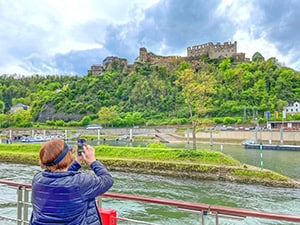
After leaving Trier we sailed downstream on the Moselle, enveloped by what appeared to be endless, steep riverbanks full of vineyards. Every available acre on the south facing hills was covered by grape vines. A stop at Cochem, Germany, gave guests a chance to view or visit the imposing Reichsburg Castle, the largest along the Moselle.
The Moselle soon joined the even wider and busier Rhine where we turned upriver for a glorious afternoon of top deck relaxing as about 20 ancient castles, some well preserved and some in ruins, crowned steep hills on both sides of the ship.
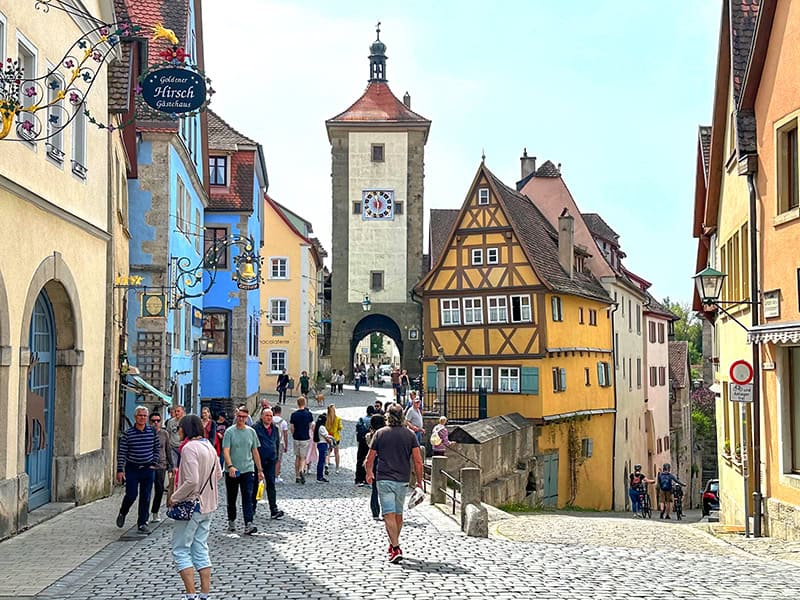
Heidelberg and Rothenburg
Comfortable Viking busses took guests on a full day tour of Heidelberg, home of Germany’s oldest university. In addition to stunning views of the town from the 12th century Heidelberg Castle, lunch for all was arranged in a large beer hall with university students at each table anxious to improve their English. A unique opportunity for international friendship.
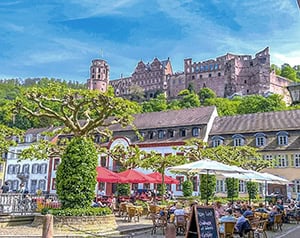
Our second last day on Viking Idi was among the most memorable. We took the optional, extra cost tour to Rothenburg, considered the best preserved medieval town in Germany. The 1.5 mile wall connects five gates with 13th to 16th century guard towers. Our included lunch was traditional stuffed cabbage rolls.
Afterwards we stopped in Wurzburg for a tour of the opulent Bishops’ Residenz. In the 1700s, prince-bishops wielded enormous power and wealth so one of them decided a grand palace would be an appropriate recognition of his importance. It includes the largest ceiling fresco in the world and dazzling rooms that rival Versailles.
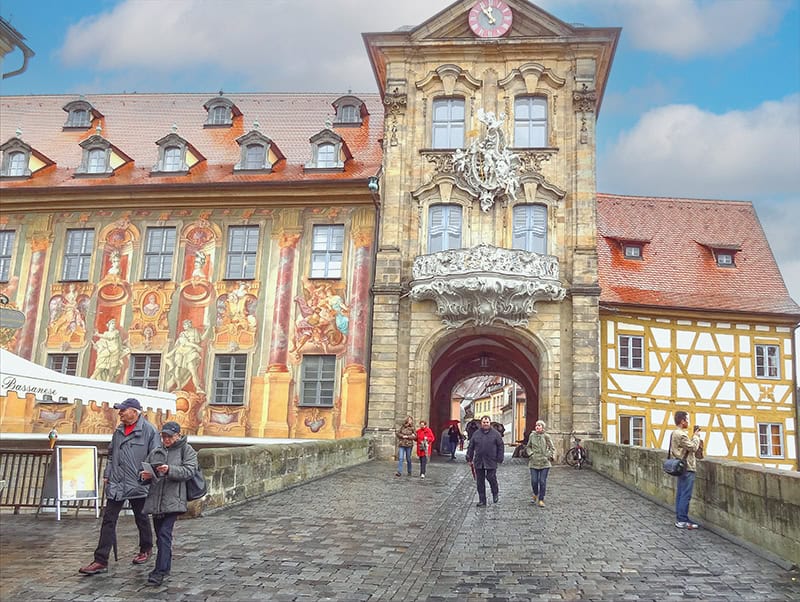
Onto Bamberg, Nuremberg and Prague
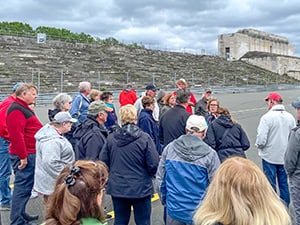
Overnight we left the mighty Rhine and joined the more tranquil Main River towards our final port, another UNESCO World Heritage Site, the town of Bamberg. Now the northern terminus of the Main-Danube Canal, Bamberg was the center of the Holy Roman Empire in the 11th century.
Now the charming town is best known for its Rathaus (Town Hall), built in the middle of a bridge in the 1400s (now a museum) and its unique (and very tasty) smoky beer.
In Bamberg all Viking guests disembarked the ship and boarded buses for the four-hour drive to Prague. Our one break enroute was in the Bavarian city of Nuremberg, site of the emotional Nuremberg Trials. It was where high profile Nazis leaned their fate at the end of World War 2.
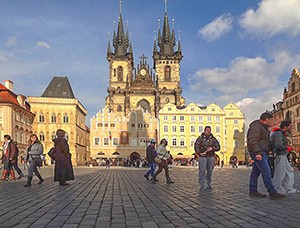
Nuremberg was chosen because it was the site of the most massive Nazi rallies where Hitler gave rousing speeches to adoring crowds. That huge field and stadium was our first stop where an excellent tour guide told us about the rallies and their impact. Then we headed for the market square for lunch on and a final taste of excellent German bratwurst and beer.
At the end of our Viking River Cruise from Paris to Prague, we spent two days in the Czech capitol, including a walking tour of its Old Town and a chance to sample traditional stuffed dumplings smothered with onion and cabbage, proved to be a fitting end to an excellent twelve days with Viking.
Is a Viking River Cruise Paris to Prague for You?
With the long bus rides at both ends of the tour it’s not for everyone. But if a touch of Viking restlessness and love of travel inspires you, the chance to experience four countries, three major rivers, scores of castles and many UNESCO World Heritage sites, all under the care of Europe’s most experienced river cruise line, it makes the adventure very worthwhile for many.

Leave a Reply